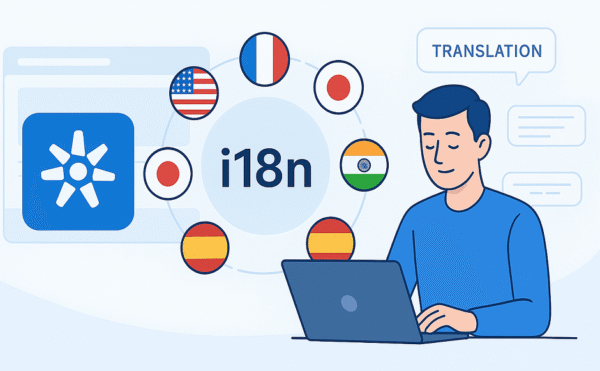
Security and Anti-Fraud for Online Stores
Fraud prevention in e-commerce isn’t a wall — it’s a thermostat. You constantly trade off two risks: letting a bad transaction through and losing a good one. Any added “hardness” costs conversion; any “softness” costs chargebacks. Winners dose friction: give freedom when the signal is clean, add a measured challenge when context raises suspicion.
Threat map: who attacks and how
Real-world playbooks include:
- Carding and BIN-range testing: mass micro-payments to find live cards and 3DS patterns.
- Credential stuffing: replaying leaked logins to steal points/addresses.
- Scraping/vitaling: harvesting prices/stock for dumping or buying out scarce goods.
- Social vectors: “no item returned”, forged delivery proofs, “item not received” disputes.
- Integration weaknesses: webhook interception/tampering, secret leakage, repeat charges without idempotency.
Risk markers: what really signals
No single clue is decisive; ensembles are.
- Device/network context: unfamiliar device for this account, abrupt country/ASN change, timezone/locale drift, browser language and currency mismatch.
- Session behavior: ultra-fast beeline to pay, paste events in sensitive fields, unnaturally even timings, “error → retry” loops with micro-pauses (bots).
- Basket: cheap item + pricey express shipping, multiple gift cards, odd size/variant combos.
- Payment stage: streak of declines from one BIN, different cards for the same address/phone, billing/shipping mismatch.
- History: “new user — high ticket — rush shipping”, frequent address changes, editing email/phone right before pay.
The outcome is a risk score (0…1) that chooses the path: pass, request an extra factor, force a 3DS challenge, or deny.

3DS2: where it saves, where it breaks
3DS2 comes in two modes: frictionless (issuer approves without user action) and challenge (code/biometric). The richer the context you send to the PSP/issuer, the higher your frictionless share.
- Send “thick” data: addresses, user-agent, device fingerprint, account history.
- Trigger challenges at a risk threshold (new device + high basket + address inconsistencies, etc.).
- Track step-up rate, challenge success rate, and issuer decline codes.
Classic mistake: forcing 3DS for everyone — you’ll protect yourself… from your own conversion.
Behavioral biometrics: “how they type” > “who they are”
Think micro-patterns: typing dynamics, cursor paths, scroll inertia, touch/keyboard balance, even micro-jitter from the phone’s gyroscope. Powerful as an additional layer, not a replacement.
Where to apply gently:
- Sign-up/login — detect non-human patterns without blanket CAPTCHAs.
- Checkout — tell a real customer on a new device from a bot that “types too perfectly.”
- Support/returns — abnormal input patterns on forms.
Privacy line: store aggregated features, not raw cursor trails; honor tracking opt-out.
Bots, rate limits, and soft traps
- Device/session fingerprint (Canvas/WebGL, fonts, codecs) — a layer, not the pillar.
- Invisible honeypots: hidden fields, JS tasks hard for headless bots.
- Smarter limits: not just IP. Combine “IP + device + account + BIN + address”, catch burst patterns (10 tries/3s) and ASN swarms.
- Slow bogs for carding: increase response latency as failures pile up.
- Staged challenges: lightweight computation first, then CAPTCHA — and only for risk segments.
Secure webhooks and secrets: small things that topple systems
- Sign every webhook: HMAC of the body + timestamp; verify server-side with rotating secrets and a strict time window.
- Idempotency: replays of the same
event_idmust be safe. - Don’t rely solely on IP allowlists: prefer mTLS or signed payloads.
- Secrets belong in a vault with rotation/audit; access by least privilege.
- Log webhook retries as first-class events.
Logs as X-ray: where to look
- One
trace_idfrom PDP to PSP and back via webhook. - Layers: risk-engine decision, issuer/PSP responses, client behavior.
- Attack dashboards: errors by BIN/ASN, accelerated bursts, hourly heatmaps.
- 3DS metrics: frictionless/challenge shares, challenge success, decline codes — by country/bank/device.
- Webhooks: retry share, median delay, PSP desyncs.
Panic list: rising failures from one ASN, a spike in do_not_honor, frictionless share collapsing for one bank, avalanche of webhook retries.

Don’t kill conversion: measured friction
- New device + high ticket + express → step-up/3DS challenge.
- Long-lived account + known device → pass frictionlessly.
- Repeats on one BIN → “bog” + frequency limits, not a site-wide CAPTCHA.
- Address fields — validate by locale to improve PSP approval.
Every friction must be justified by measurable risk reduction — not by “it feels safer.”
Mini-workshop: a first risk-engine skeleton
- Signals: device, network, geo, behavior, basket, account history.
- Model: logistic regression/gradient boosting + rules (frequencies, blocklists, banned routes).
- Orchestration: allow / step-up / deny branches by score thresholds and constraints.
- Feedback: tag chargebacks/disputes/“not received”, store decision reasons.
- Experiments: keep a holdout slice to measure true impact and enable fast rollback.
Final: what counts as success
The goal isn’t “zero fraud,” it’s the lowest cost of risk at your revenue level.
- Operational: approval rate, frictionless share, step-up rate, challenge success, checkout latency.
- Financial: fraud rate, chargeback rate, gross profit per session factoring friction.
- Detective: time to detect a new pattern, time to ship a countermeasure, annotation quality.
Takeaway: tune the thermostat — rotate secrets, drill regularly, report incidents, audit friction — and the curves move in the right direction without sacrificing conversion.
Want to do something great? Let us help you.
Related Articles
In recent years, web development has undergone rapid changes. To stay ahead of the competition and effectively grow an online business, it’s essential to pay attention to the latest trends…
1) AOV isn’t the goal — it’s a by-product Average order value is tempting, but it’s only a shadow of what matters: gross profit per session. Any tactic that lifts…
The big picture: what “entering Europe and the UK” really means Localization isn’t “translate the site.” It’s aligning four independent systems: language, currency, tax, shipping. Language explains value; currency makes…
We tend to picture an “auction” as a split-second bid shoot-out. In reality it’s a chain of decisions: who’s even allowed in, how the platform spreads your budget over time,…
SEO is growing up: from keywords and “one page per phrase” to entity graphs, programmatic landing generation, and deliberate internal linking. This practical map shows how to think in clusters,…
Faster pages convert better. Skipping the academic stuff, here’s how speed (LCP, INP, CLS) turns into revenue and what to do now: leave a render margin, extract critical CSS, defer…
Any questions?







